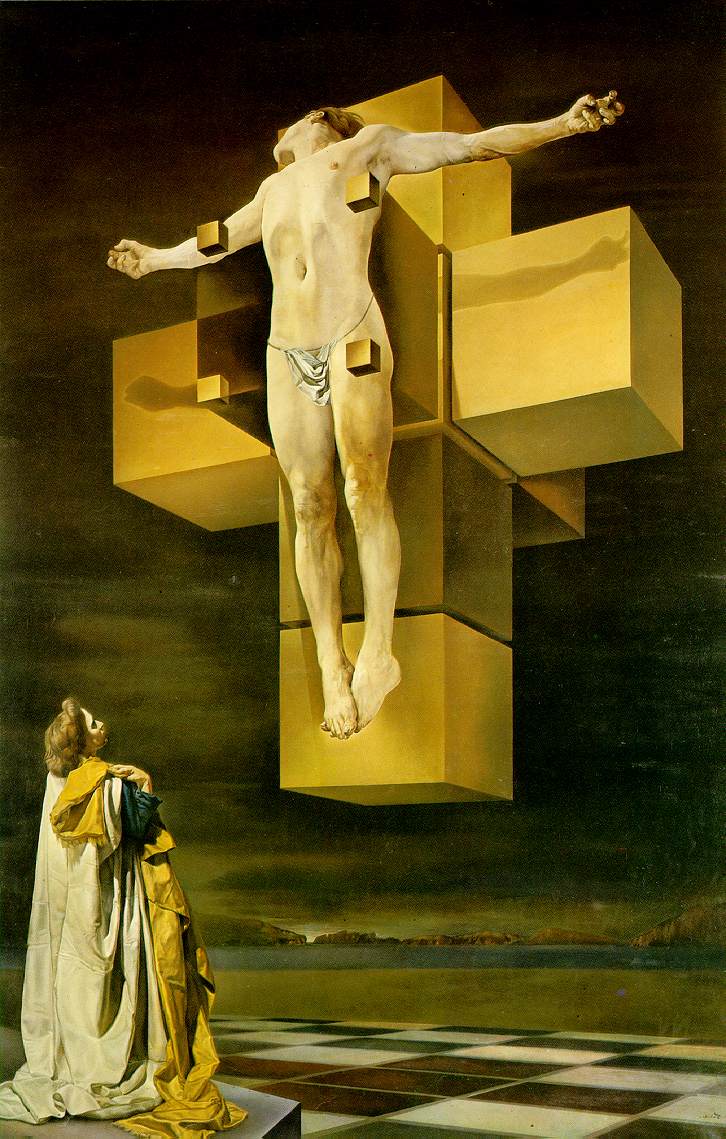- Sacred art
Sacred art is
imagery intended to uplift themind to the spiritual. It can be an object to be venerated not for what it is but for what it represents; Roman Catholics are taught that such venerated objects are more properly calledsacramentals . Some Christians are still taught to regard all non-Christiancult image s as "idols" (seeidolatry ) that are worshiped in and of themselves, and do not consider them as "sacred art". The use of art in religion is essential, as it symbolizes understanding and feelings that words simply can't describe.Christian European sacred art
Sacred art was common in the
Europe anMiddle Ages , but many of the greatest masters commissioned by theRoman Catholic Church lived during theRenaissance . It was during this time thatMichelangelo Buonarotti painted theSistine Chapel and carved the "Pietà ",Gianlorenzo Bernini created the massive columns inSt. Peter's Basilica , andLeonardo da Vinci painted the "Last Supper ".Most
Christian art is allusive, or built around themes familiar to the intended observer. One of the most common Christian themes is that of a woman (the Virgin Mary) holding a child (the infant Jesus). Another is that ofJesus on thecross . For the benefit of the illiterate, an elaborateiconographic system developed to conclusively identify scenes:Saint Agnes depicted with a lamb,Saint Peter with keys,Saint Patrick with a shamrock.The genre of sacred art has lost much of its vigor since the Renaissance, but the themes are still popular, a 20th century example being
Salvador Dalí 's "Crucifixion " [http://en.wikipedia.org/wiki/
] ". After the Second World War some fine work was presented by major French artistsfollowing the impuls of Father Marie-Alain Couturier: the Vence Chapel, the Église Notre-Dame de Toute Grâce du Plateau d'Assy, the Église du Sacré Cœur d'Audincourt see:Jean René Bazaine ."See also
Madonna and Child ,Icon ,Images of Jesus "Tibetan Buddhist sacred art
Most Tibetan Buddhist artforms are related to the practice of
Vajrayana or Buddhist tantra.Tibetan art includesthangka s andmandala s, often including depictions of Buddhas andbodhisattva s. Creation of Buddhist art is usually done as ameditation as well as creating an object as aid to meditation. An example of this is the creation of asand mandala by monks; before and after the construction prayers are recited, and the form of the mandala represents the pure surroundings (palace) of a Buddha on which is meditated to train the mind. The work is rarely, if ever, signed by the artist. Other Tibetan Buddhist art includes metal ritual objects, such as thevajra and thephurba .Islamic sacred art
Because of the strict injunctions against such depictions of humans or animals which might result in idol-worship,
Islamic art developed a unique character, utilizing a number of primary forms: geometric,arabesque , floral, and calligraphic, which are often interwoven. From early times, Muslim art has reflected this balanced, harmonious world-view. It focuses on spiritual essence rather than physical form. It offers no pictures of saints or illustrations of stories from theQur'an , but rather expresses fundamental concepts such as the infinite nature of God through repetitive geometric designs without beginning or end.External links
* [http://www.thinplace.com/gallery/108/Islamic-Calligraphy-Gallery.html Islamic Calligraphy]
* [http://iconia.canonist.com/ Iconia - Wherever Faith Meets Art]
* [http://www.mandalazone.com/home.html mandalaZone ~ Original mandalas reminiscent of ancient spiritual art]
* [http://buddhism.kalachakranet.org/tantra_symbols.html Buddhist Tantric symbols]
* [http://religiousicons.com/ Religious Art - Christian Icons]
Wikimedia Foundation. 2010.
